Both Liverpool and Manchester City battle neck to neck in the race to the English Premier League title with very little margin for error. In the final half of the season, City faced Burnley at Turf Moor in a must-win situation for them to stay in contention with their rivals.
Burnley, on the other hand, had nothing to lose well clear of relegation and an impressive recent form. With three consecutive wins and an impressive draw against Chelsea, they certainly did not look to make City’s job any easier in City’s quest for the title. In this tactical analysis, we examine how both teams fared in a fixture whose result was decided by a margin as fine as three centimetres.
Lineups
Pep Guardiola elaborated in his pre-match press conference on the rationale behind selecting his centre-halves: When faced against teams that require lots of build-up from the back, he prefers John Stones. When it comes to winning aerial duels and defending against long balls (such as this game), he feels safer with his captain Vincent Kompany.
Aymeric Laporte was tasked at building up play, having a good balance of both. The rest of his squad reflected no changes with Fernandinho and Kevin de Bruyne still recovering from injuries.
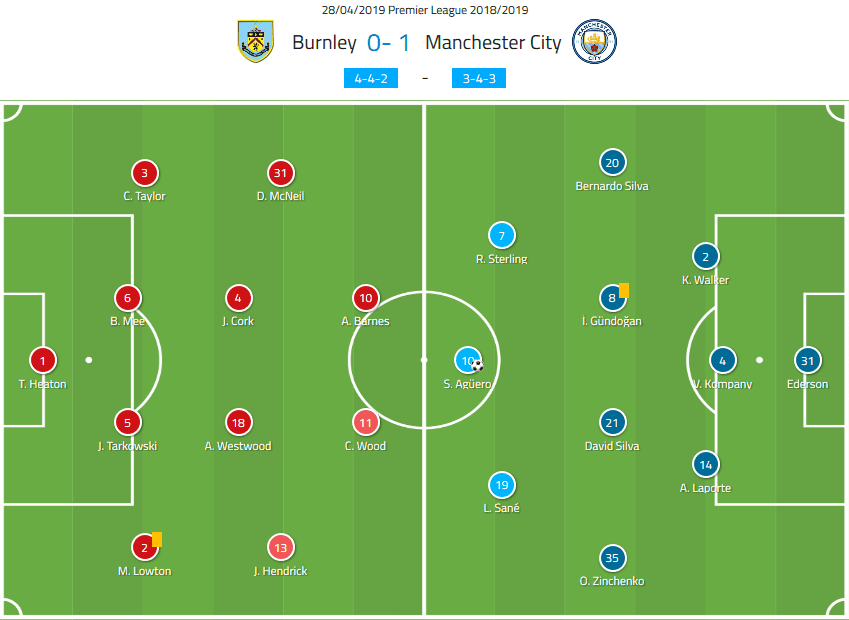
Burnley have shown a steady rise in form with their 4-4-2 system even against stronger opponents such as Chelsea. The front duo of Chris Wood and Ashley Barnes received praise from Guardiola in the press conference before the game. They played a big role in his selection process.
Tactical Overview
City struggled to break down a much disciplined Burnley side with their positional game from the beginning. Burnley effectively closed down the spaces around their 18-yard-box with a disciplined line from their back four. They took control of the centre of the pitch with their central midfielders and forwards, and the half spaces with their wide midfielders.
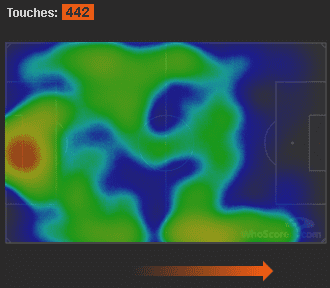
When the ball was played all the way up to Ederson, City’s keeper, İlkay Gündoğan came short to receive the pass as usual. No pressure was applied high up by Burnley, who solely focused on preventing City from gaining a lot of numerical superiority behind Burnley’s lines of pressure. As a result, Burnley made City look far below their standards for the first 20 minutes.
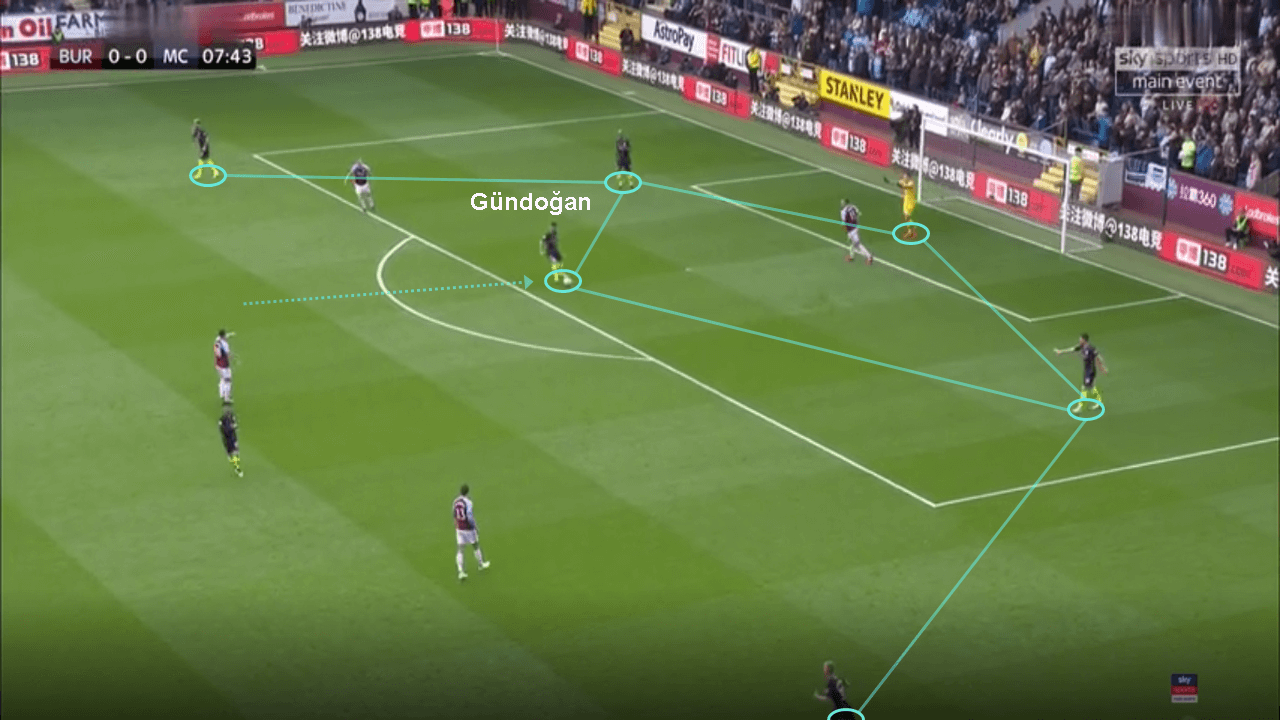
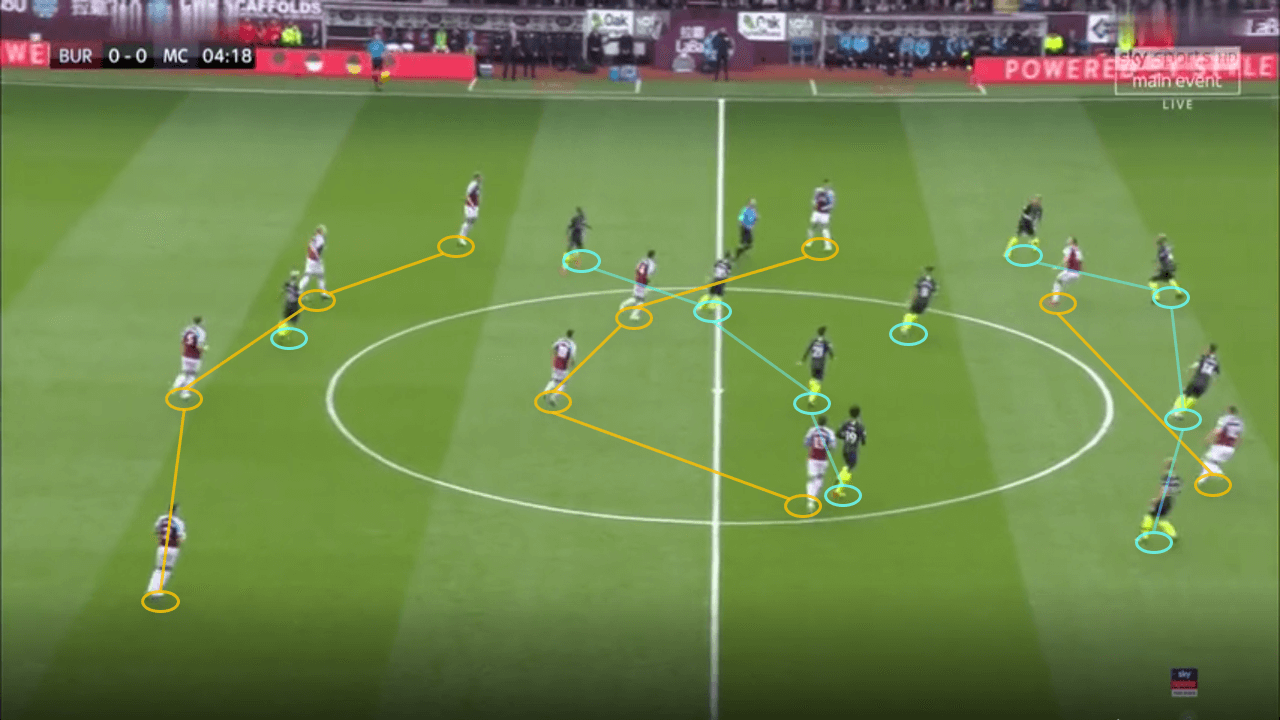
It was 15 degrees of sunshine over the Turf Moor and the pitch wasn’t exactly irrigated for the short balls to roll easily. It was hardly a surprise that Sean Dyche looked to play the aerial balls which was Burnley’s strength. City would still be able to build-up from the back in plenty of space and tally 608 passes in the game with 70% possession. But they would struggle to maintain pass accuracy in the final third, where Burnley cut down the spaces effectively.
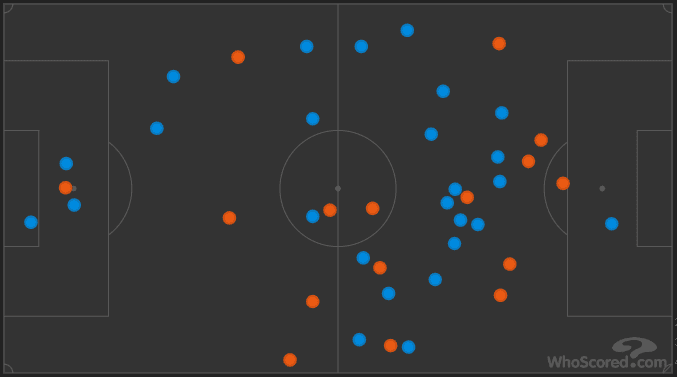
Closing down the space
If City is a team that looks to dominate the ball, Burnley’s domination of space in this game was phenomenal. Their early anticipation to cut down the spaces for City’s players made all the difference to his game. They moved together as a tightly disciplined unit, all the way to the touchline. Despite playing on a regular 7140 sq. m. field, City looked suffocated in the final third.
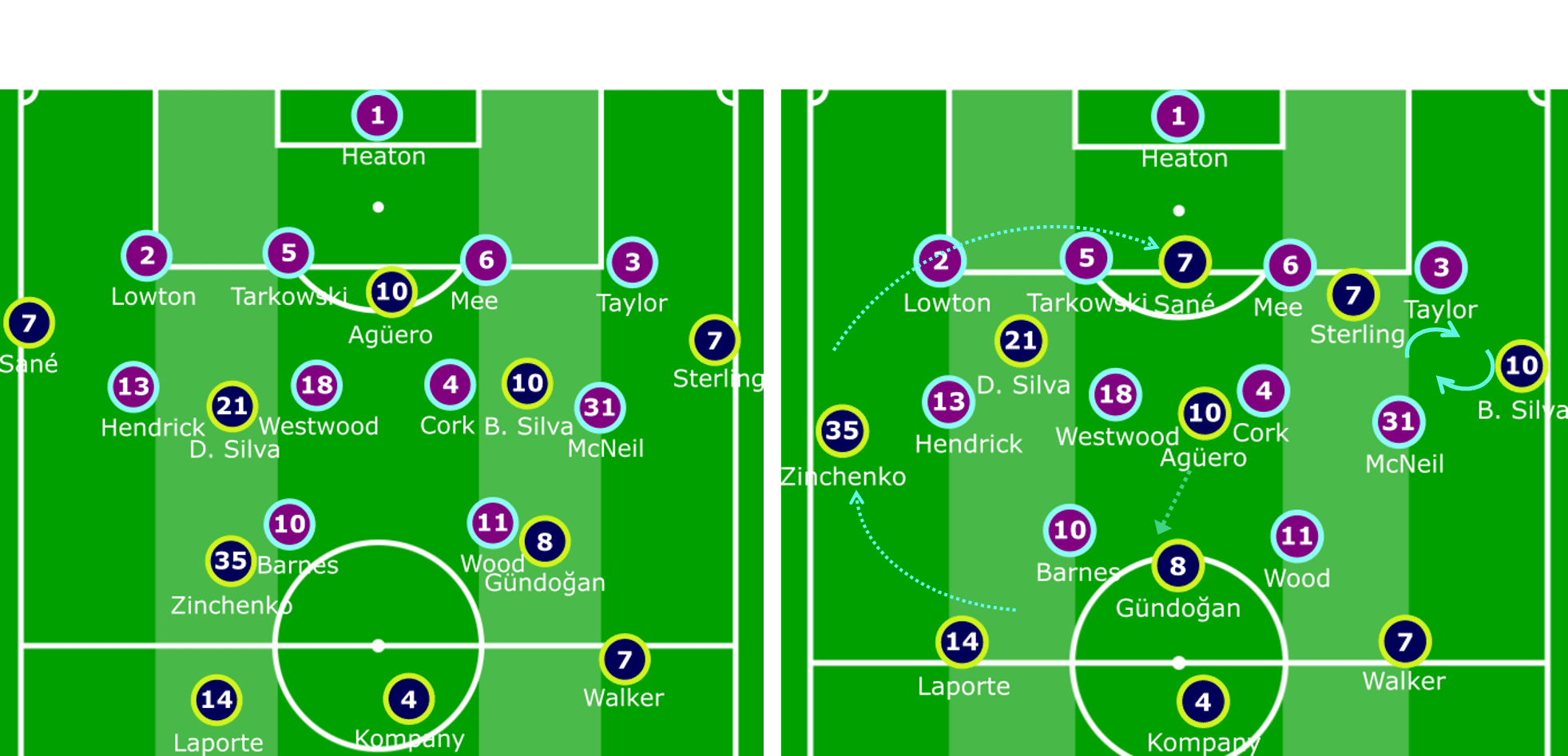
City looked to play Sergio Agüero in a false 9 role, dropping deep to combine and build-up with the rest. They switched to rotate the players on the flanks with Leroy Sané tucking inside to occupy the position of the centre forward. When he moved inside, Oleksandr Zinchenko would look to offer width on the outside. On the right flank, Raheem Sterling and Bernardo Silva would rotate for the right halfspace. Charlie Taylor did an incredible job of closing the wide player to the touchline while managing the channel between him and Ben Mee effectively.
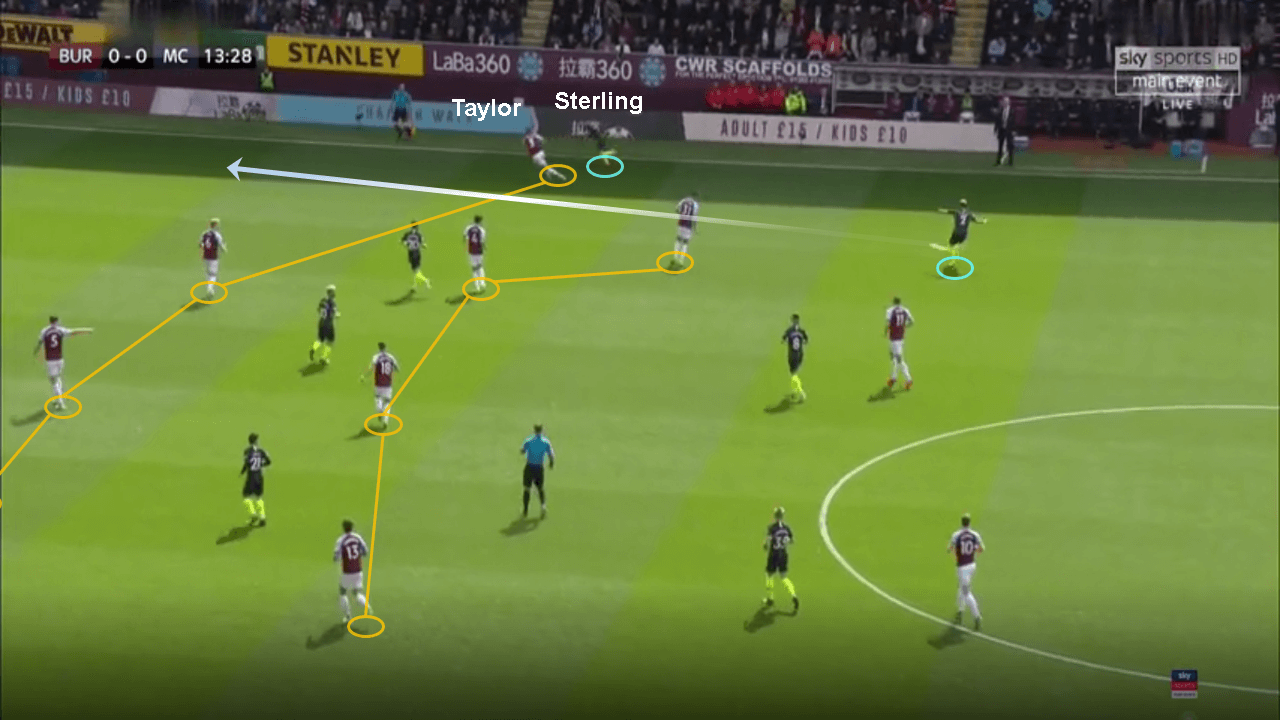
Inverted fullback strategy worked partially
Zinchenko tucked in alongside Gündoğan from the fullback position while City build-up to make it a W-M formation. This works against high pressing teams to create numerical superiority behind the first line of pressure while building up. However, in this game, Zinchenko found himself locked in the same space as Ashley Barnes.
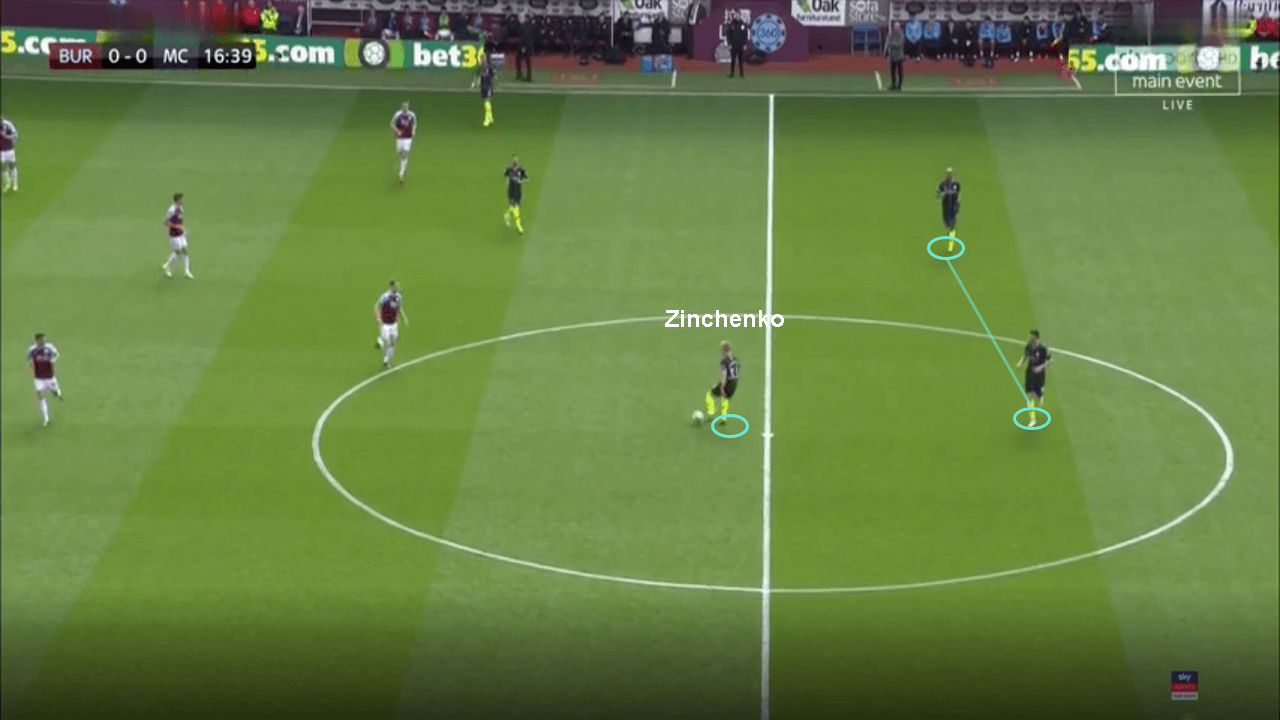
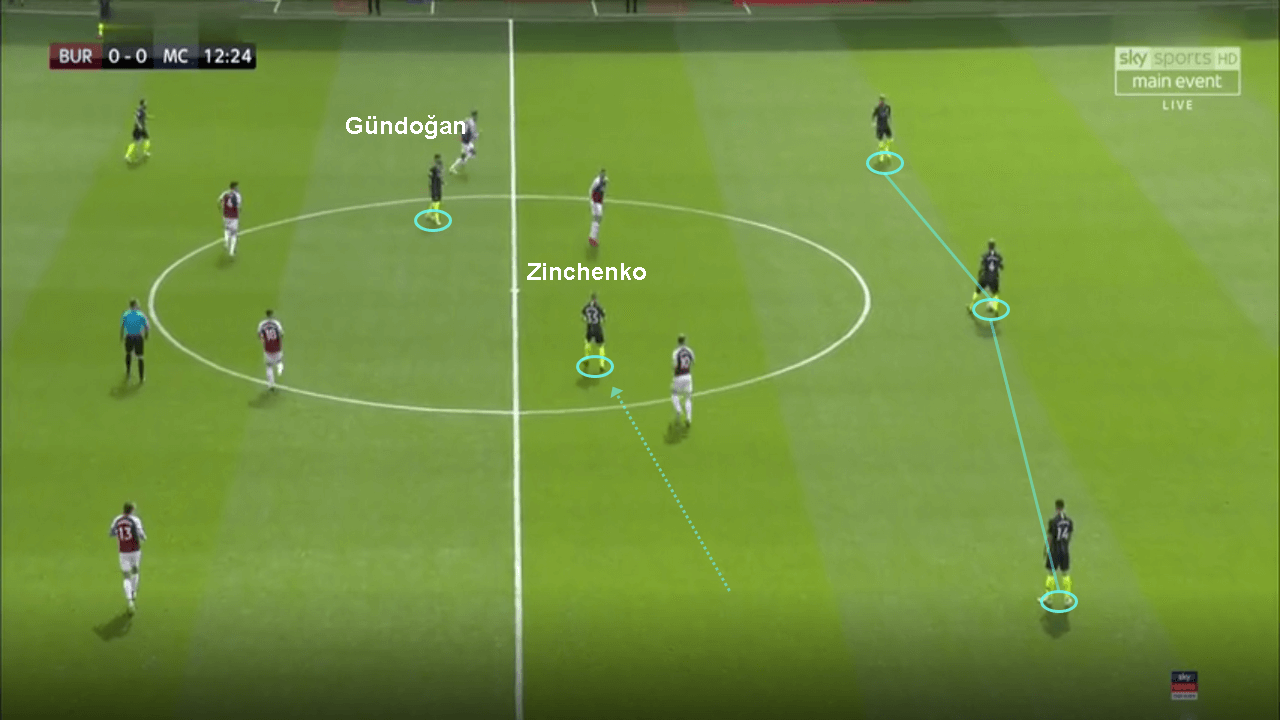
On the far left, Sané had a rather poor game and wasn’t always an option for Laporte as he drove forward up the half space. Kyle Walker on the right had room to receive the balls in the half-space but could not find either Bernardo or Sterling for a key pass due to Burnley’s astute defending of space.
Defensively, since Burnley relied on playing the aerial balls to their quick strikers, they could easily bypass the density of City’s midfield overload. Although Kompany, true to his standards, did a phenomenal job in winning the aerials, it was quite a risk for Guardiola to have a 2v2 scenario at the back. Dwight McNeill would also counter quickly alongside making it quite a scare for City on the turnover of possession.
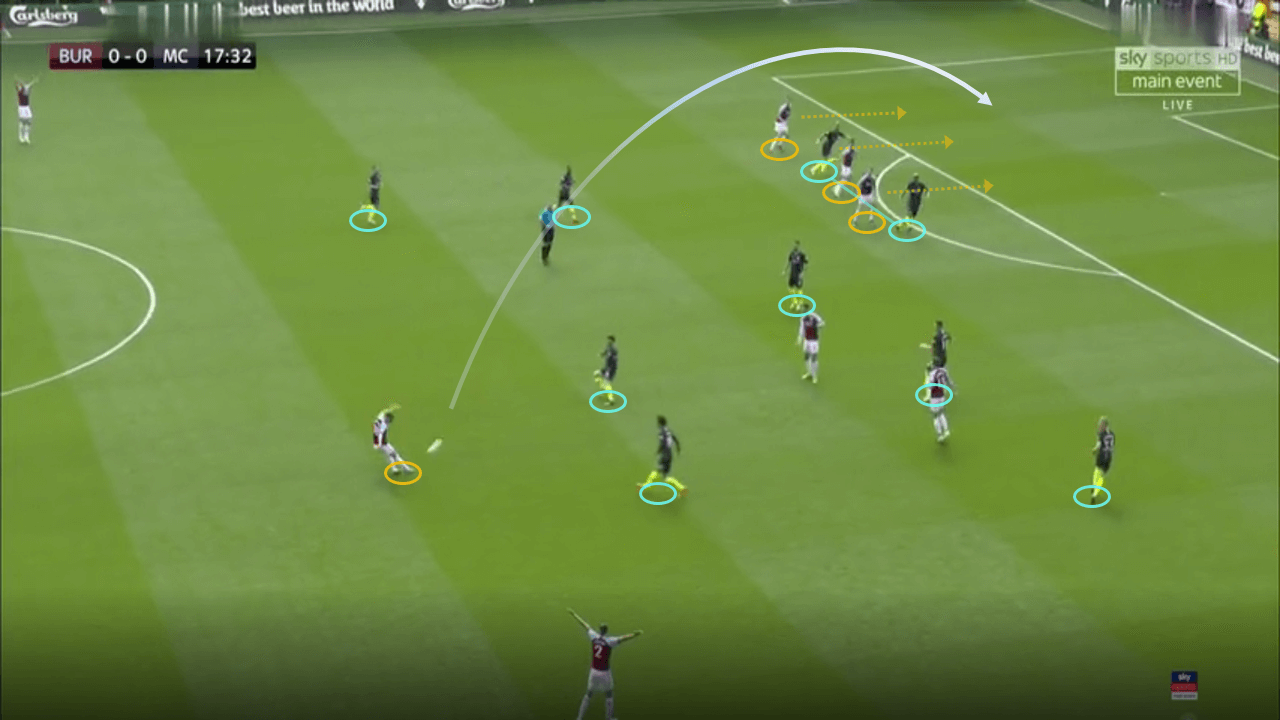
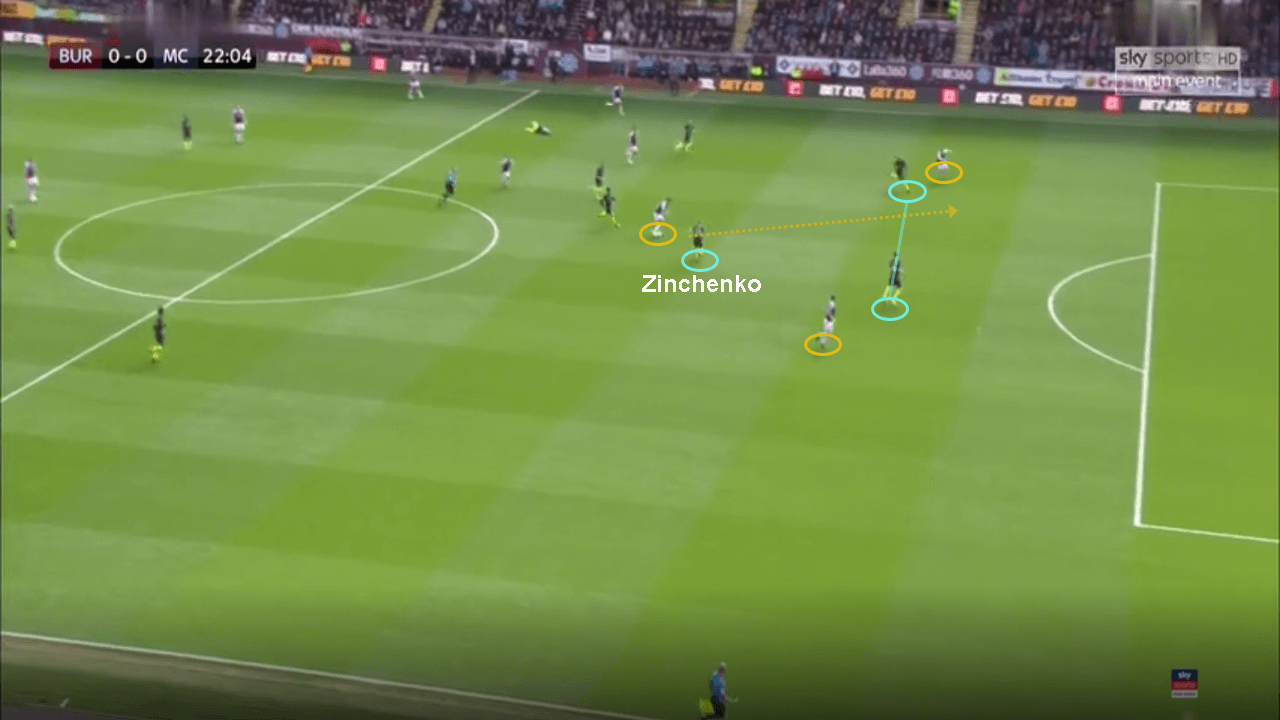
Burnley’s back line and City’s lack of a constant striker
Agüero playing as a false 9 dropping deep and Sané only tucking in when Laporte would drive forward meant City did not play with a constant centre forward. This allowed Burnley’s back line marshalled by Ben Mee and James Tarkowski to push higher. By forcing a claustrophobic City to play the long crosses, Burnley played to their aerial strengths quite tactically.
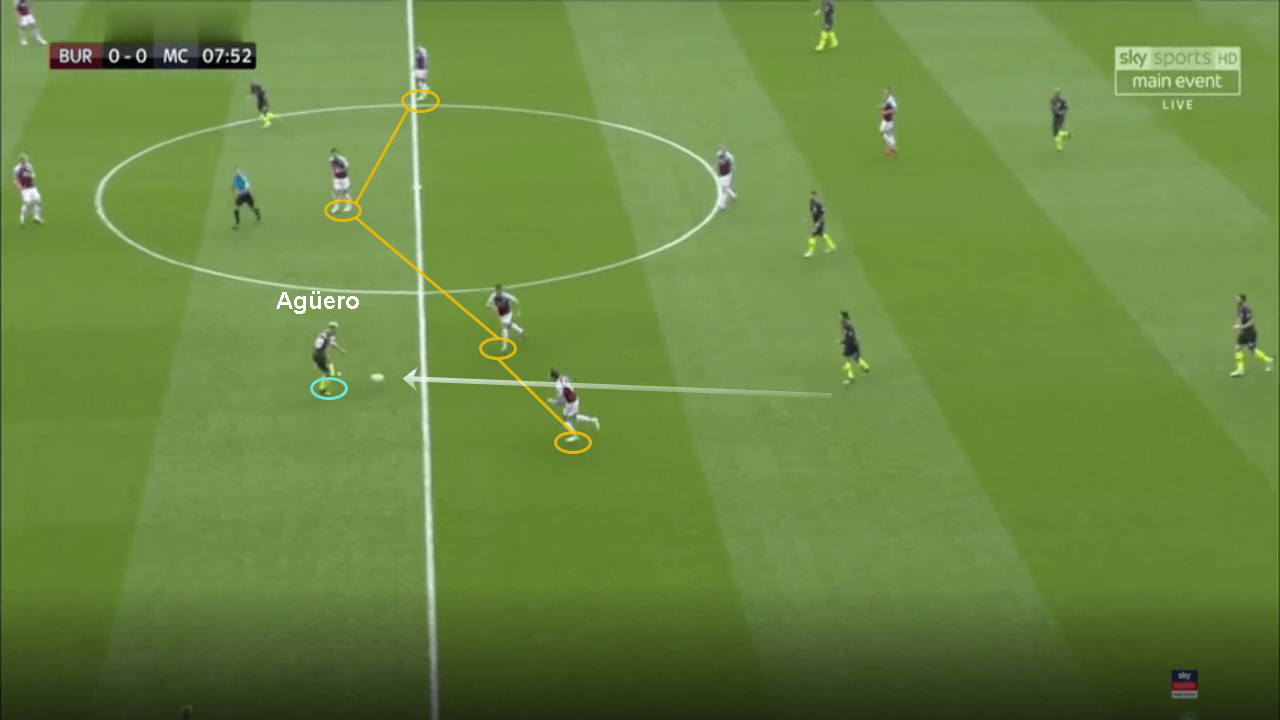
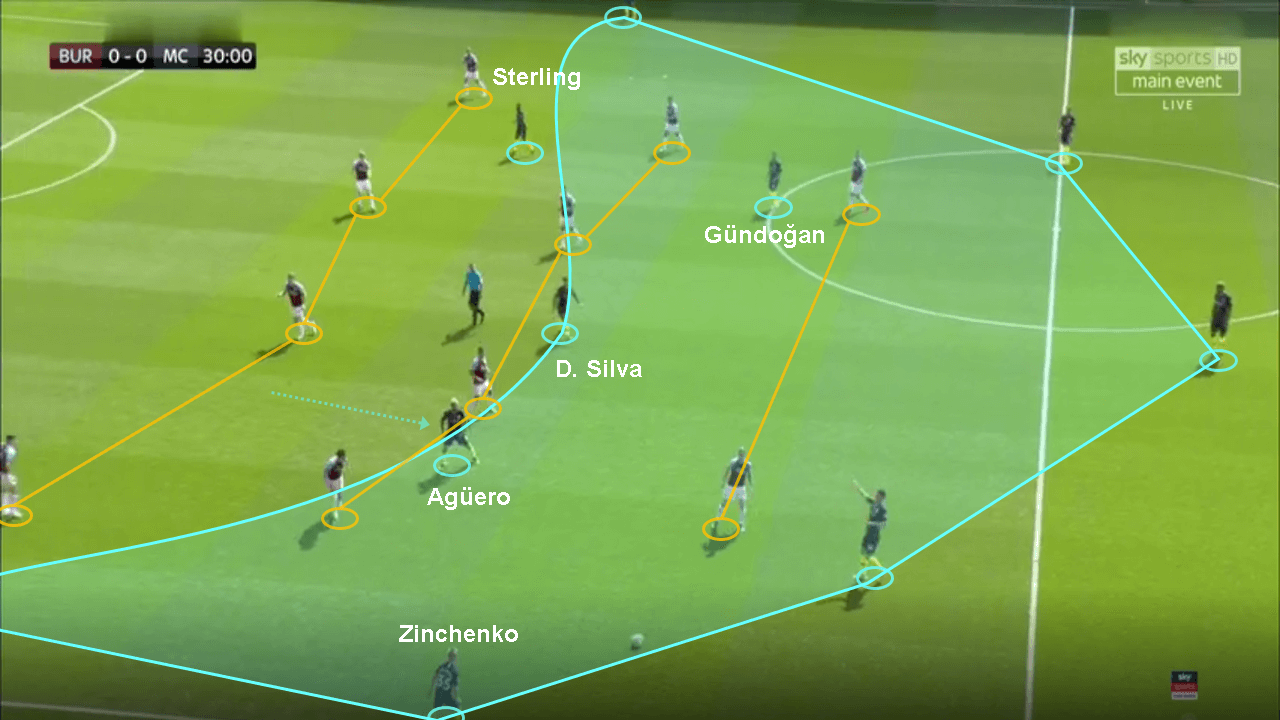
The few moments that Agüero played in his traditional number nine role was when Burnley’s back line was under pressure. They still managed to be brave and hold the line boldly for a team defending with a low-block. On multiple occasions when City looked to feed the crosses, they pulled the offside trap with pristine coordination.
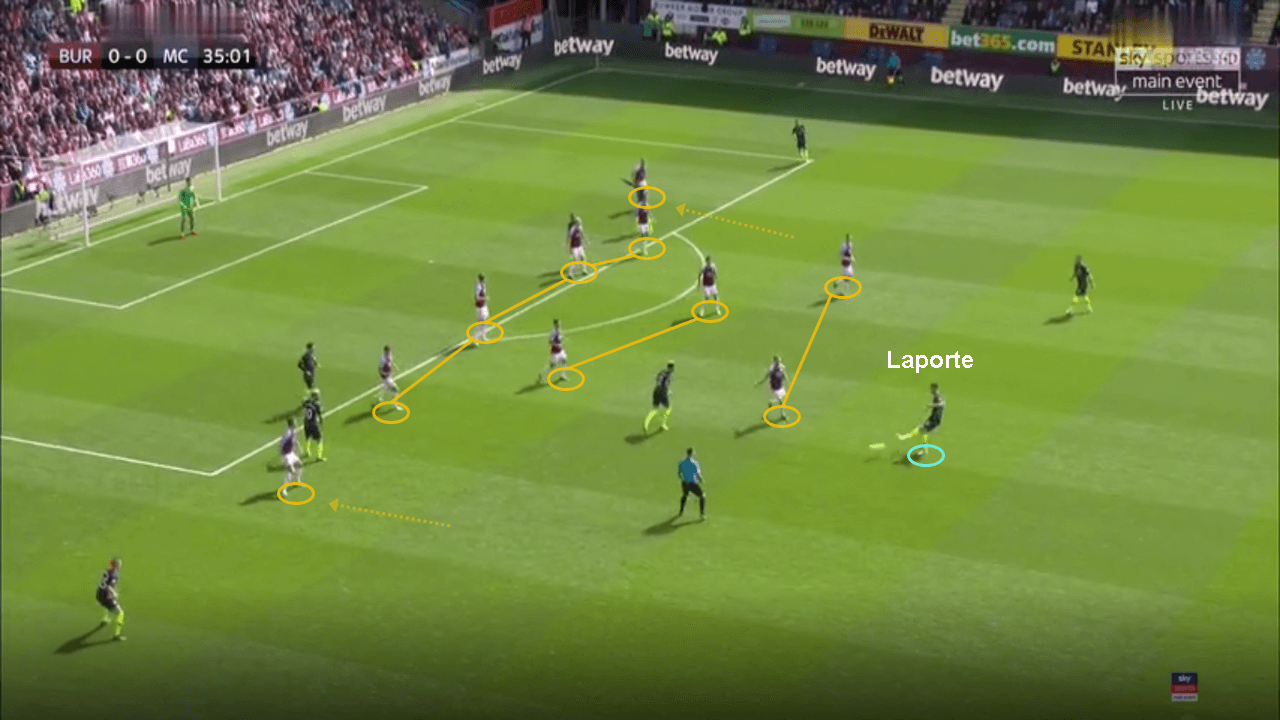
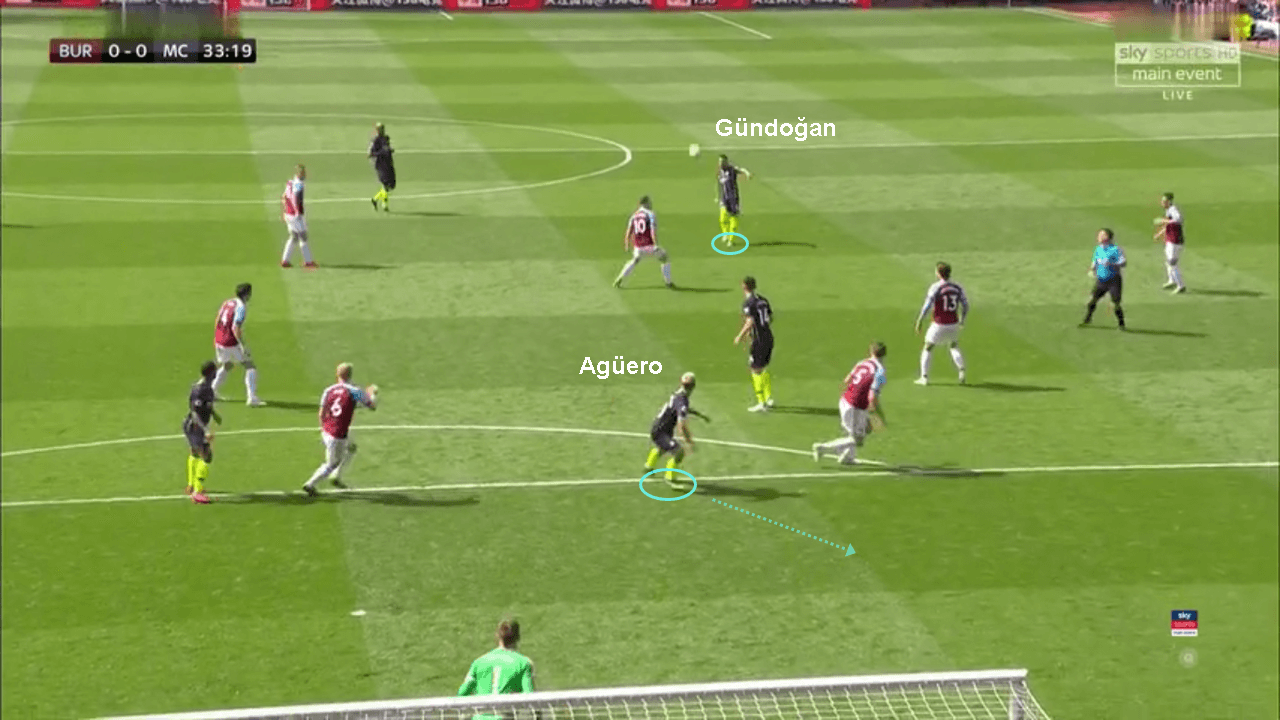
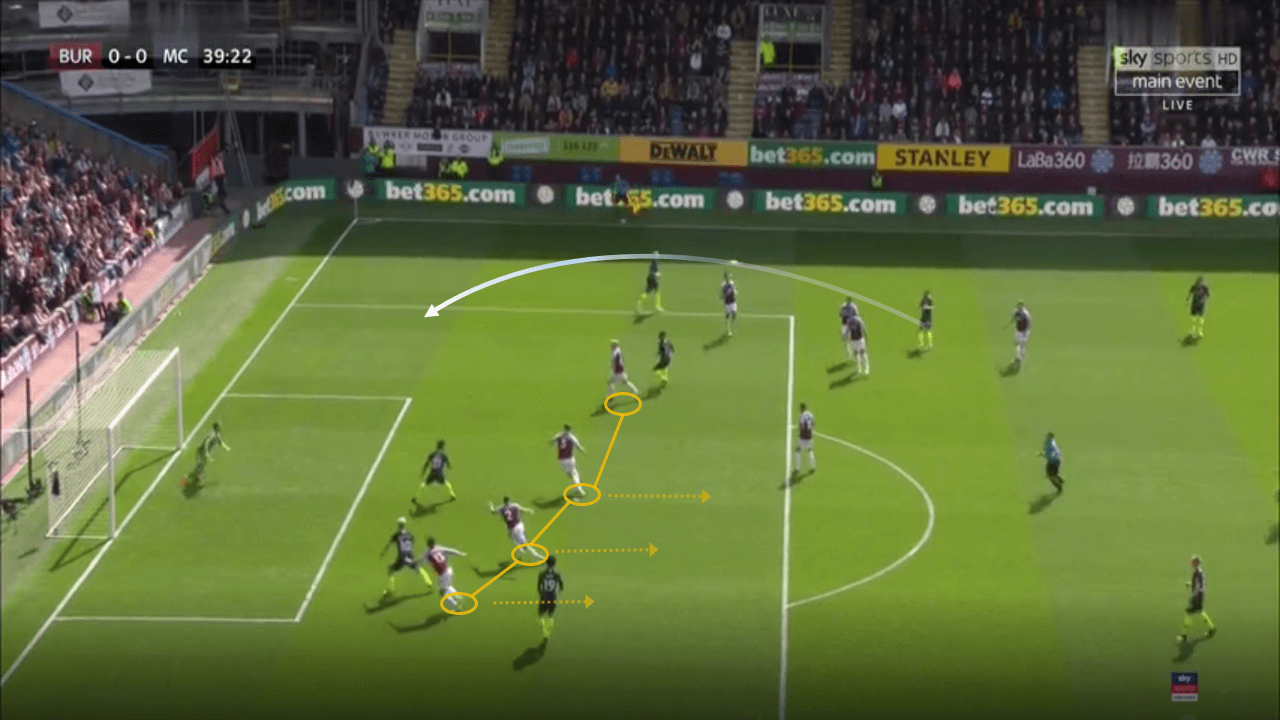
By the end of the first half, City managed just a handful of chances against Burnley’s goal and looked uninspired. Burnley, on the other hand, did create a big chance for themselves on the counter.
Pep’s half time improvisation
Guardiola looked understandably upset with his team’s first-half performance but as always, managed to come up with necessary solutions for the second half. The strategy was to play quicker in front of Burnley’s box, take more shots and then contest for the second balls. City also looked to circulate the ball more fluidly from side to side and play the diagonal balls to upset Burnley’s defensive structure.
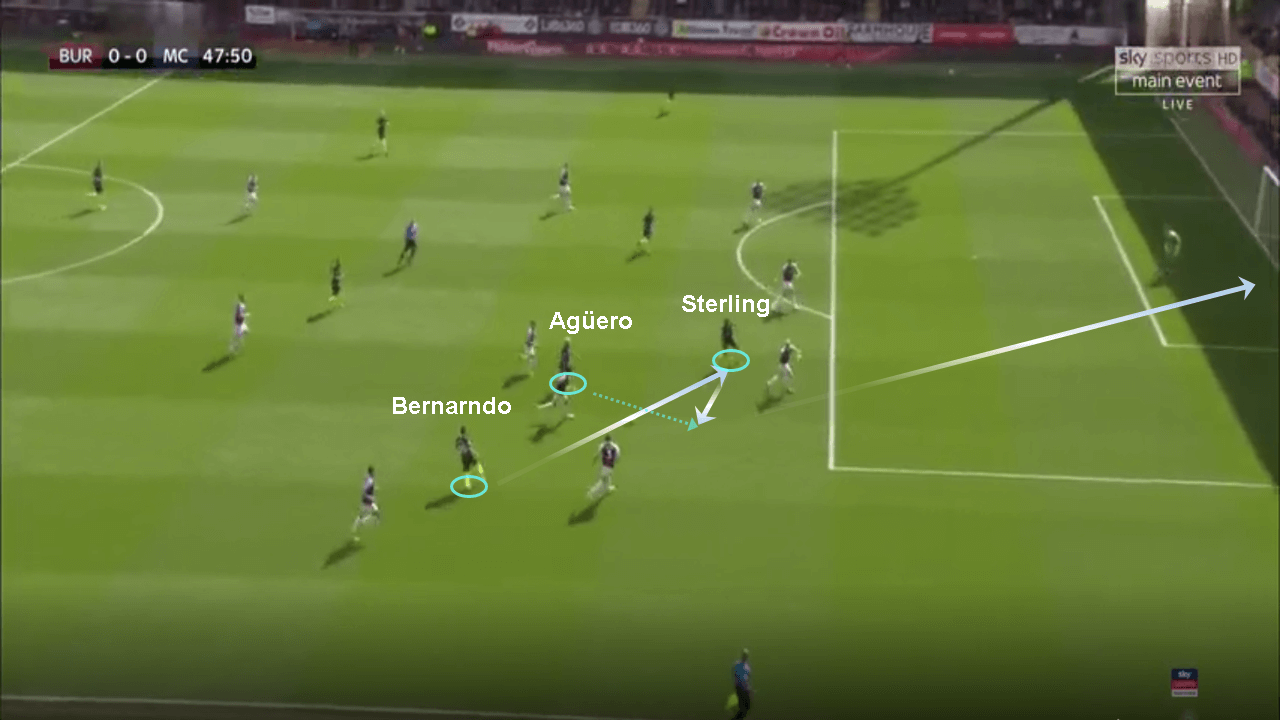
The boys from Manchester came into the second half relentless with their efforts at goal. They created numerous chances and shots on goal, and their efforts finally bore fruit past the hour mark. Despite the robust defending by Burnley, Agüero managed to put in a goal by three centimetres and three centimetres was enough for goal-line technology to come to City’s rescue.
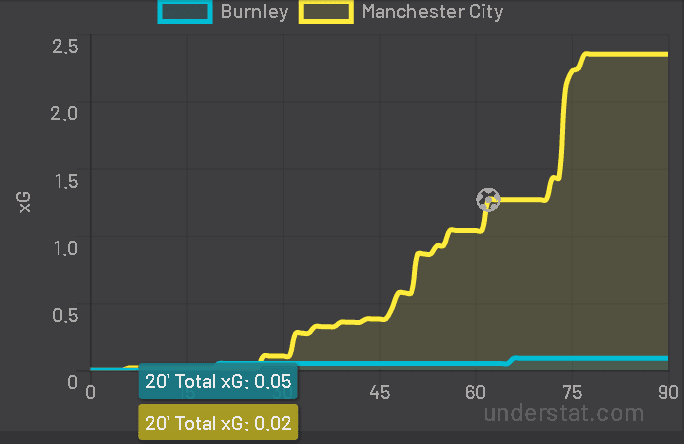
Try ‘Mee’
After an outstanding performance against Chelsea, Ben Mee stole the show with his defending once again. When his keeper Tom Heaton was beaten, Ben Mee wasted no time in rushing to the goal line to make crucial blocks. This goal-line defending by him and Tarkowski saved many attempts at goal in the second half by City even though the blues managed to slip one in by a fine margin.
Burnley’s centre-half pair managed a total of 12 blocks, 12 clearances, three interceptions and won eight of 13 duels. The 21-year-old Ben Mee deserved the man of the match for his textbook defensive game and is a potential target for bigger clubs this summer.
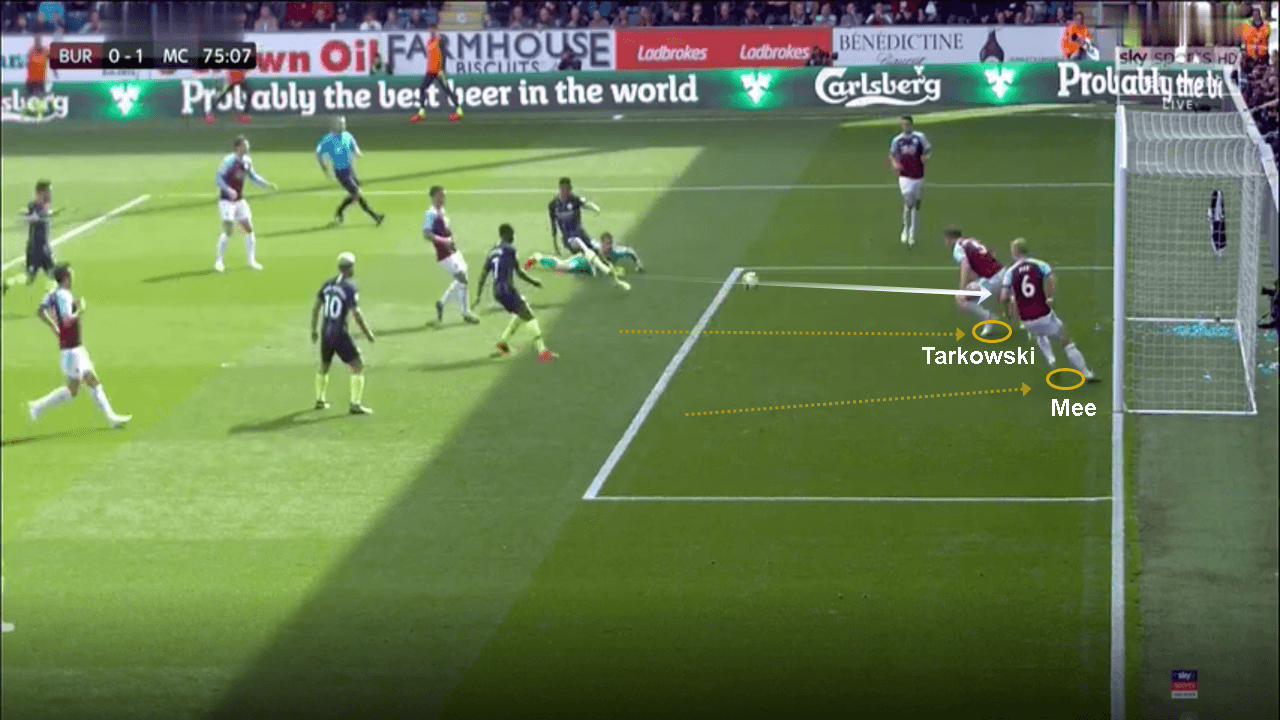
With a 1-0 lead, City looked to open up Burnley by inviting the press. Guardiola made necessary substitutions and brought on Gabriel Jesus and John Stones while bolstering his existing defence with Nicolás Otamendi to see the game through along with three vital points.
Conclusion
Although Burnley, in contrast to City, had nothing to play for and could play an ultra-defensive game, they did manage to make life very difficult for Guardiola and his men at Turf Moor. They deserve full credit for completely silencing the invincible City side in the first half considering this is the same side that annihilated them 5-0 in January at the Etihad.
Pep Guardiola’s positional game model is complex and takes a lot of tactical understanding by his players. He needs to find a way to get his players to adapt to different tactical systems, even at the cost of sacrificing some features of his style of play, especially in games with high-stakes. In the final push for the title, they need to count on wins far more decisive than just three centimetres.
If you love tactical analysis, then you’ll love the digital magazines from totalfootballanalysis.com – a guaranteed 100+ pages of pure tactical analysis covering topics from the Premier League, Serie A, La Liga, Bundesliga and many, many more. Buy your copy of the April issue for just ₤4.99 here, or even better sign up for a ₤50 annual membership (12 monthly issues plus the annual review) right here.

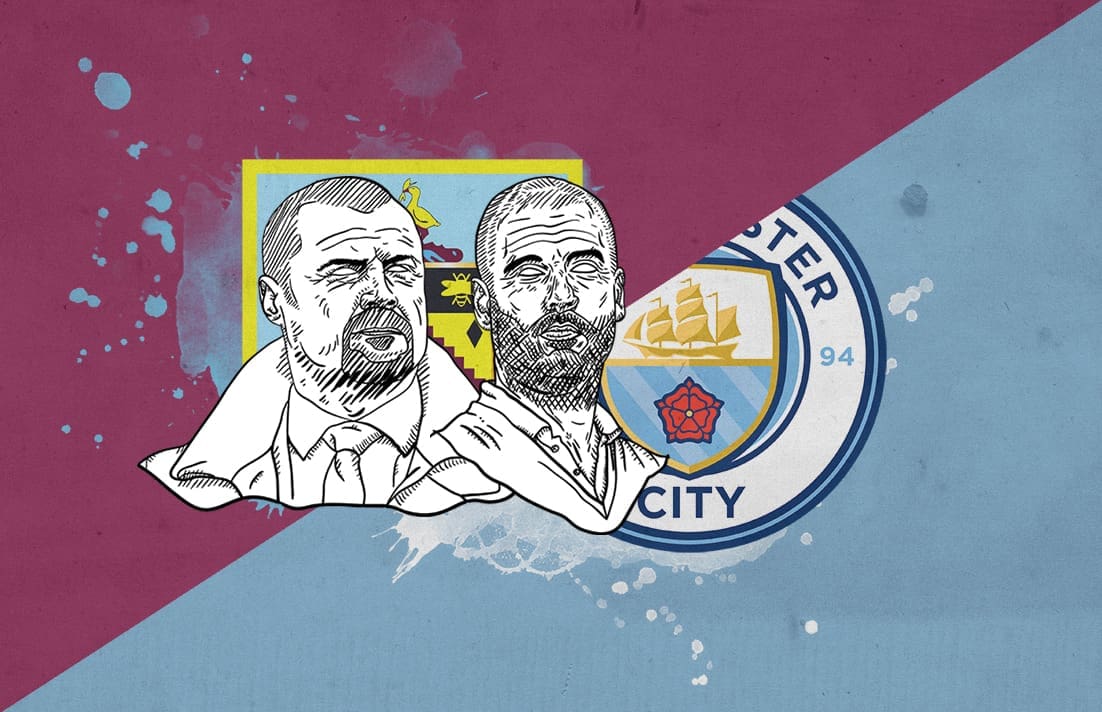



Comments